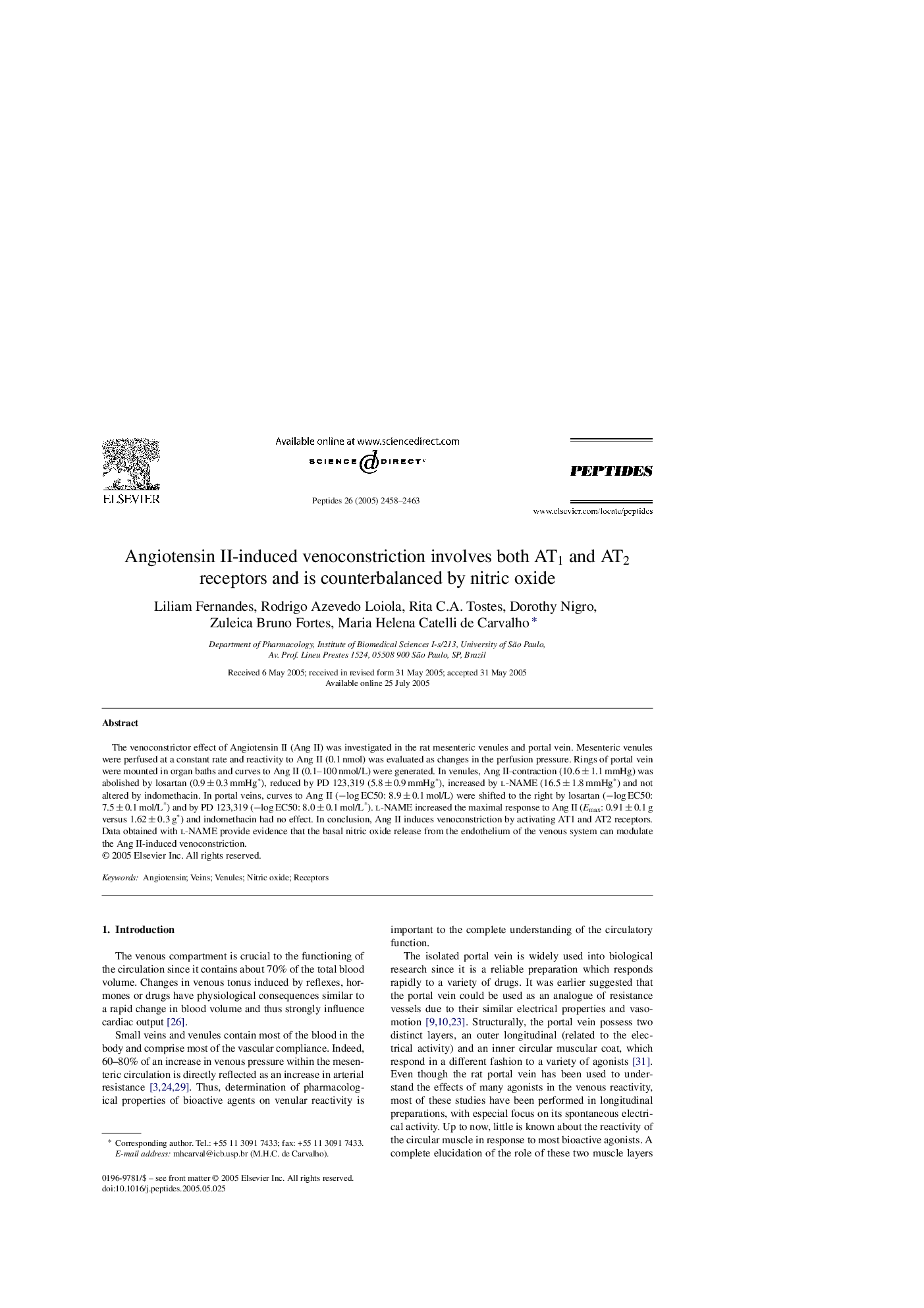| Article ID | Journal | Published Year | Pages | File Type |
|---|---|---|---|---|
| 2008690 | Peptides | 2005 | 6 Pages |
Abstract
The venoconstrictor effect of Angiotensin II (Ang II) was investigated in the rat mesenteric venules and portal vein. Mesenteric venules were perfused at a constant rate and reactivity to Ang II (0.1 nmol) was evaluated as changes in the perfusion pressure. Rings of portal vein were mounted in organ baths and curves to Ang II (0.1-100 nmol/L) were generated. In venules, Ang II-contraction (10.6 ± 1.1 mmHg) was abolished by losartan (0.9 ± 0.3 mmHg*), reduced by PD 123,319 (5.8 ± 0.9 mmHg*), increased by l-NAME (16.5 ± 1.8 mmHg*) and not altered by indomethacin. In portal veins, curves to Ang II (âlog EC50: 8.9 ± 0.1 mol/L) were shifted to the right by losartan (âlog EC50: 7.5 ± 0.1 mol/L*) and by PD 123,319 (âlog EC50: 8.0 ± 0.1 mol/L*). l-NAME increased the maximal response to Ang II (Emax: 0.91 ± 0.1 g versus 1.62 ± 0.3 g*) and indomethacin had no effect. In conclusion, Ang II induces venoconstriction by activating AT1 and AT2 receptors. Data obtained with l-NAME provide evidence that the basal nitric oxide release from the endothelium of the venous system can modulate the Ang II-induced venoconstriction.
Related Topics
Life Sciences
Biochemistry, Genetics and Molecular Biology
Biochemistry
Authors
Liliam Fernandes, Rodrigo Azevedo Loiola, Rita C.A. Tostes, Dorothy Nigro, Zuleica Bruno Fortes, Maria Helena Catelli de Carvalho,
